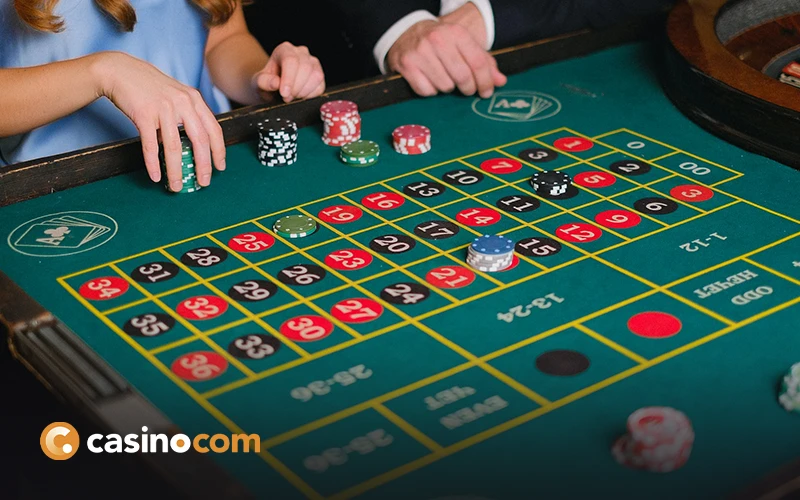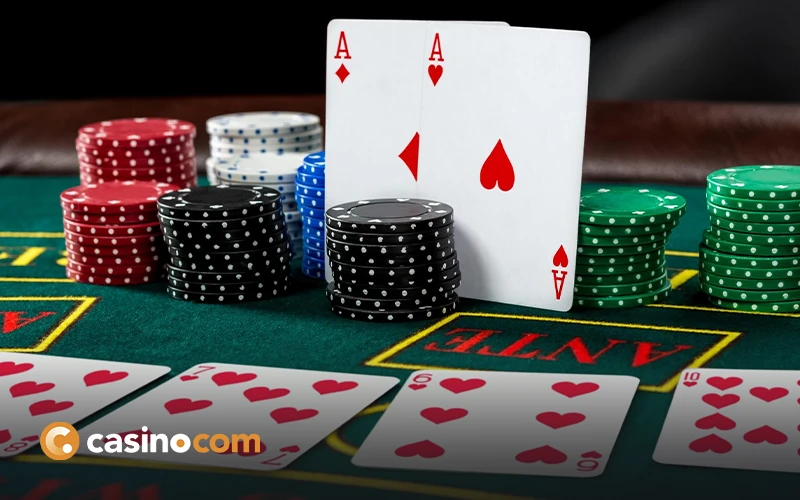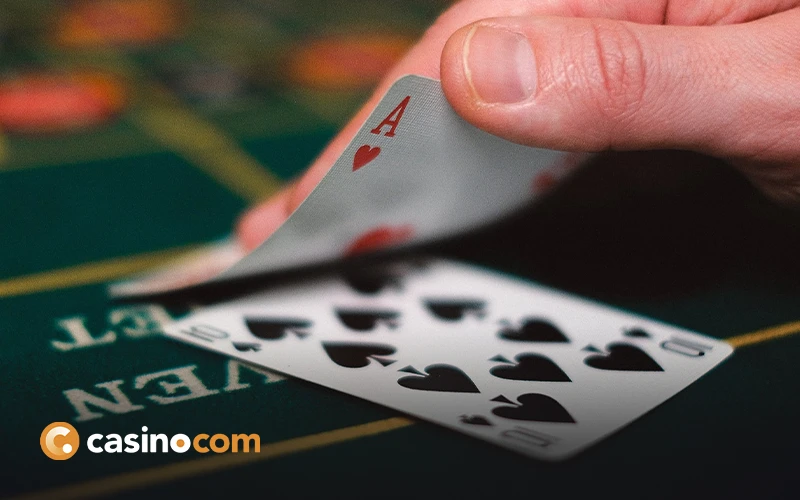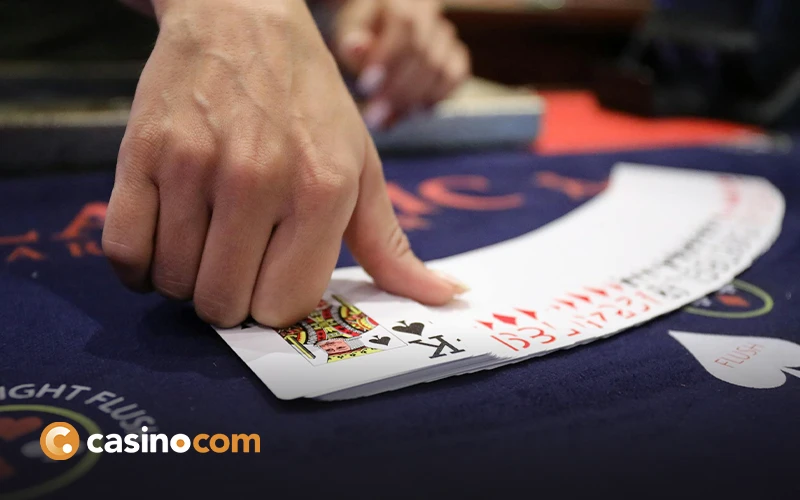Roulette is easily one of the most popular casino games out there. The concept is simple, and players hope to ride the luck of the wheel to victory. What you may not have realized is the purpose behind the layout of the wheel. What is there to look at other than the colors and numbers? A breakdown of the wheel will unveil more than you realize.
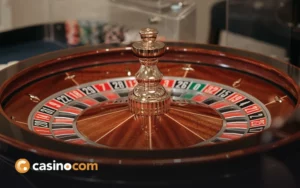
Those who enjoy a trip to the casino, be it a brick-and-mortar or online casinos, have no doubt partook in roulette. The concept is a simple one but a classic, no less. Predict the right color or number before the ball drops and win your bet. Strategies are involved but they are kept relatively straightforward.
If you think you know the game of roulette, there is always more to learn. For instance, the layout of a roulette wheel is a bit deeper than you may have realized. Let’s get into the logic behind the roulette wheel, how it came to be, and the different variations that can be found in casinos around the world.
Basic Logic Behind Roulette Wheel Layout
When you stop to look at the logic behind the layout of the roulette wheel, the concept is fairly simple. The numbers you find on a roulette wheel are laid out in a way to make it easy to achieve four main objectives. Those objectives are:
- Alternate colors across the entirety of the wheel
- Evenly distribute odd and even numbers
- Alternate low and high numbers with regular frequency
- Confuse the player into making less than sound bets
Though it may not be the most complex system ever devised, there is definitely more than meets the eye. The goal of any casino is to give the house an edge over the player and roulette is no different. The layout of the numbers is to make it confusing for the player to make a sound decision, further amplifying the house’s edge.
Why the Layout of Roulette Wheel Numbers is Important
If you have played roulette before, you may not think much of the wheel. Though it may be simple, it is a critical element to the game itself. For that reason, it is important for players to take note of the arrangement of numbers within the roulette wheel itself. Depending on what kind of roulette you are playing, the layout can look a bit different from place to place.
Modern tables can vary in seemingly small differences that can impact the way that a player approaches the game. More importantly, it can have an impact on the player’s overall odds of winning. By having a better understanding of the layout of a roulette wheel, players can garner better odds, reduce the house edge, and even calculate odds without the assistance of an odds calculator on hand.
A great example of the differences between one roulette wheel and another is in the number of zeros present. A single zero roulette wheel offers a different rate of average return when compared to other roulette wheels. Even more interestingly, they have the same number of black and red pockets.
The Basic Components of a Roulette Wheel
Before we get started breaking down the three main types of roulette wheels, it helps to know what the basic components of your standard wheel are going to be. These are common no matter what variation you see, so it is something of a unifying factor across the game of roulette around the world.
Base – The base on the average roulette wheel is going to look about the same with the most glaring variation being the material it is made of. For the most part, it is going to be comprised mostly of wood with touches of metal as well. The focus of the base is to protect both the ball track and the wheel itself.
Ball Track – The ball track is critical because it has an impact on the results of the game. The ball track is the path that allows the ball to travel to the pockets.
Pockets – Those pockets are what we call the various numbered sections on the roulette wheel. These are all the spots where the ball can possibly fall on the wheel.
Rotor – When talking about the rotor, it is referring to the mechanism that turns the wheel itself. When you break down all of the components of the average roulette wheel, it is the only part that actually moves.
Diamonds – The diamonds are a set of obstacles that have been designed specifically to alter the ball’s trajectory. More importantly, it ensures that the results are completely random and unbiased, fair to the player.
The Different Roulette Wheel Variations
Before playing your next game of roulette, it helps to know the different variations. Though you may find that there are other niche options out there, you will run across three main types: European, American, and French. Each has its own intricacies that make it stand apart from the others.
European Roulette Wheels
European wheels are commonly used for both land-based and online casinos. On a European roulette wheel, you will find 37 pocks, including numbers 1-36 and a green zero pocket. The most important feature is that single green zero since it reduces the edge that the house garners compared to the American version (which has a pair of green zero pockets). The typical house advantage for your typical European roulette wheel is around 2.7%.
European Roulette Table Numbers
On a European roulette wheel, the sequence of numbers is random and doesn’t follow a discernable pattern. They do go in odd-even fashion, featuring pockets that are black and red which alternate all the way around the wheel.
The sequence goes: 0, 32, 15, 19, 4, 21, 2, 25, 17, 34, 6, 27, 13, 36, 11, 30, 8, 23, 10, 5, 24, 16, 33, 1, 20, 14, 31, 9, 22, 18, 29, 7, 28, 12, 35, 3, 26
Another thing to keep in mind is that the numbers are evenly divided between low and high numbers. There is one exception and that is how the numbers 5 and 10 are positioned. Because of the layout, that makes it much tougher to predict the outcome of a particular game, adding to the overall excitement of the game.
Layout and Bets
The layout is pretty simple based on the previous section. A European roulette table shows all the numbers that can be bet on and the green zero is generally at the top. Knowing the different bet types will go a long way as well:
Inside Bets. When talking about the inside betting area, one would be referring to the individual numbers on the wheel plus the lines that separate them. Within your inside bets would be street bets, split bets, corner bets, straight-up bets, line bets, and five-number bets.
Outside Bets. Outside betting refers to the area that is located outside of the individual numbers and includes different groups of numbers instead. Outside bets include things like red/black bets, dozen bets, column bets, high/low bets, snake bets, and even/odd bets.
American Roulette Wheels
As the name implies, this is the preferred variation found in American casinos but not in many other places. This version has 38 total pockets to the European version’s 37 pockets, the difference being that there is a green double zero pocket in addition to the green single zero pocket.
Though it may not seem like much of a difference, it is an important one. The double zero pocket gives the house a slightly larger edge during each game. Regular players of online roulette typically prefer the European version because of the reduction in house edge.
American Roulette Table Numbers
Another major difference between American and European roulette wheels is the sequencing of the numbers. On this table, one may notice that there is a more recognizable pattern compared to the European counterpart.
The numbers on an American roulette wheel go clockwise and in the following sequence: 0, 28, 9, 26, 30, 11, 7, 20, 32, 17, 5, 22, 34, 15, 3, 24, 36, 13, 1, 00, 27, 10, 25, 29, 12, 8, 19, 31, 18, 6, 21, 33, 16, 4, 23, 35, 14, 2
The goal here is to provide a better balance between the number of black and red pockets and the odd and even numbers. The number sequence, compared to European roulette, is not totally random and follows a pattern, alternating between high and low numbers as well as even and odd numbers.
Layout and Bets
The additional pocket for double zero makes betting a bit different. The numbers found on the layout are in a trio of columns, each featuring 12 numbers, typically found in numerical order. Those numbers will also alternate between black and red. On the outer edge of the table is the betting area where players lay their chips on betting sections or individual numbers.
Inside Bets. Much like the European version, there are inside and outside bets. Inside bets are placed on the numbers or lines between those numbers. Inside bets include the line bet, five number bet, corner bet, street bet, split bet, and straight-up bet.
Outside Bets. Bets placed on the outside of the layout garner this tag. This is the section covering a group of numbers rather than an individual number. Outside bets include red/black, high/low, even/odd, snake bets, dozen bets, and column bets.
French Roulette Wheels
Finally, there is the French roulette wheel. It is one of the more popular of the three variants because it offers the lowest edge to the house. That alone makes it the preferred option of the three popular variants. French roulette is similar to European roulette in that there are 37 pockets – featuring numbers 1-36 and a single green zero pocket.
French Roulette Table Numbers
The sequencing of the French roulette table is in a clockwise manner and totally random, showing no discernable patterns. It starts with the green zero and goes in the following sequence: 0, 32,15, 19, 4, 21, 2, 25, 17, 34, 6, 27, 13, 36, 11, 30, 8, 23, 10, 5, 24, 16, 33, 1, 20, 14, 31, 9, 22, 18, 29, 7, 28, 12, 35, 3, 26
The biggest difference between this and the American wheel is that the numbers aren’t in consecutive order. Instead, it follows a random sequence and steers away from specific patterns. Like the European wheel, the individual numbers are colored red and black.
Layout and Bets
There is a commonality of the French table in that it has a betting area on the outside edge of the layout. There are three columns of 12, each found in numerical order and alternating between red and black. Like the other tables, there are also inside and outside bets.
Inside Bets. These bets go on the individual numbers and/or the lines between them. These include the line bet, five number bet, street bet, corner bet, straight-up bet, and split bet.
Outside Bets. These bets go on the outer part of the layout, covering groups of numbers. These include the snake bet, high/low bet, even/odd bet, dozen bet, red/black bet, and column bet.
Conclusion
Though they may seem the same, roulette wheels can have important differences that impact the outcome of the game. Knowing the basics is a good place to start and ensures that you know what to look for.

